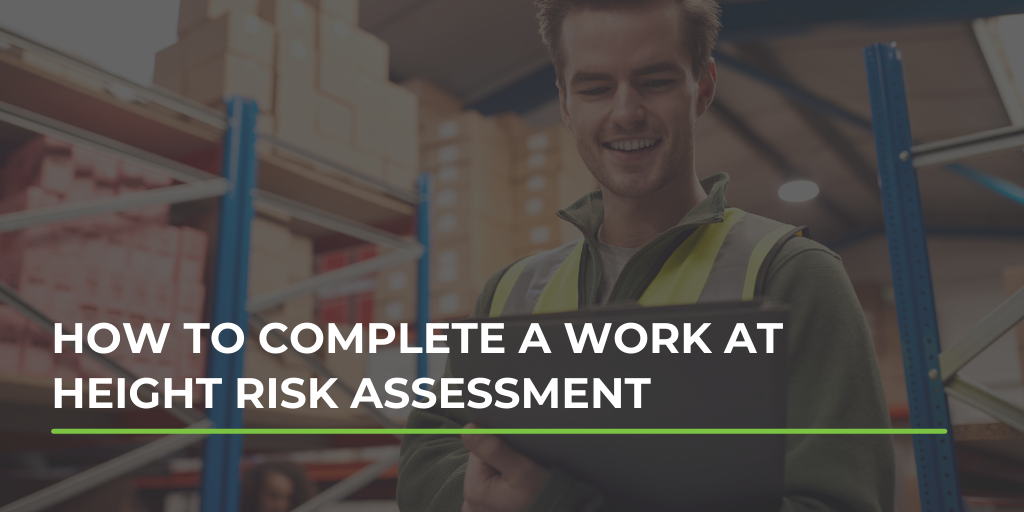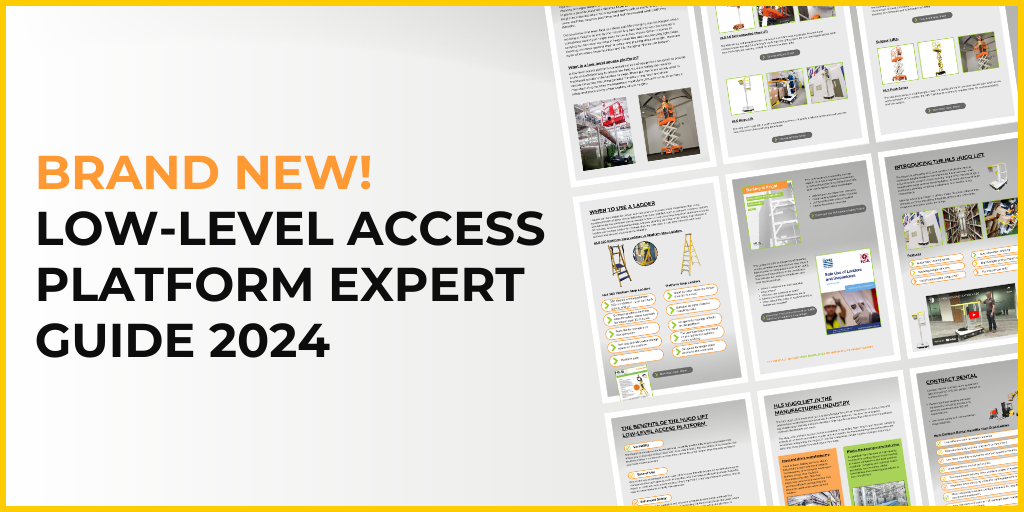Working at height puts your team members at greater risk of a fall. According to Slipstripsandfalls.org, “37% of all reported workplace injuries were as a result of a slip, trip or fall, with 28% of all fatalities in the workplace being caused by a slip, trip or fall.” And this is expected to cost £1 billion pounds a year. A risk assessment can help your team recognise and respond to the risk of falls and other hazards in your workplace. So we’ve provided a basic guide to working at height risk assessments below.
What is a working at height risk assessment?Working at height risk assessments contain key information to help you make decisions about your working at height tasks. They help you to keep risk to a minimum to protect your team and your organisation from injury - financial or physical. At a basic level they:
- Document the risks and scale
- Define any precautions taken
- Act as a record of findings
- Offer a regular review schedule
Any organisation with 5 team members or more are required to complete risk assessments.
Why do you need one?
Working at height risk assessments are required because you’re putting the workforce at risk of injury. Risk assessments help you think about how to reduce and control these risks. You must complete one before any work at height task commences. And you also need a rescue plan which is a legal requirement. This is so you know how to respond effectively if there is an incident. If an incident does occur a well practiced rescue plan provides a simple process to follow even while under high stress.
Read our Blog: Do you have a mewp rescue plan?
What is included?
Ideally, you want your risk assessment to come from a trained competent person. These are top-of-the-field professionals in workplace safety who are ideally trained to advise you on workplace hazards. The form itself should include a few key details like:
- Basic contact info for the site team
- Description of the assessed activity
- The risk score achieved
- The risk reduction measures taken
- Notes if further action is needed
- Identifying the hazards.
- Deciding who might be harmed and how.
- Evaluating the risks and deciding on precautions.
- Recording your findings and implementing them.
- Reviewing your assessment and updating if necessary.
You must manage the health and safety risks in your workplace. To do this you need to decide whether you are doing enough to prevent harm. This is known as a risk assessment.
A risk assessment is not about creating huge amounts of paperwork, but rather about taking sensible measures to control the risks in your workplace. You are probably already taking steps to protect your employees, but your risk assessment will tell you whether you should be doing more.
How do I assess the risks and hazards in my workplace?
The following steps form part of your risk assessment:
- Walk around your workplace and look for any hazards. A hazard is anything that may cause harm.
- Then think about the risks. A risk is the chance, high or low, of somebody being harmed by the hazard, and how serious the harm could be.
- Think about how accidents could happen and who might be harmed. Ask your employees what they think the hazards are, as they may notice things that are not obvious to you and may have some good ideas on how to control the risks. Focus on the real risks - those that are most likely to cause harm.
- Consider the measures you are already taking to control the risks and ask if there is anything you should do to make your workplace safer.
- Once you have identified the risks and what you need to do to control them, you should put the appropriate measures into place.
- Then record your findings. If you have fewer than five employees you don't have to write anything down but it is good practice to keep a record. An easy way to record your findings is to download the risk assessment template
- Take a look at the Health and Safety Executive (HSE)'s selection of example risk assessment. They show you what a completed risk assessment might look like for your type of business. You can use these as a guide when doing your own.
- You can get more help and ideas on ways to control your risk from HSE.
- Few workplaces stay the same and sooner or later you will bring in new equipment, substances or procedures that could lead to new hazards. It makes sense to review your risk assessment on a regular basis. If anything significant changes, check your risk assessment and update it.
DOWNLOAD OUR FREE WORK AT HEIGHT RISK ASSESSMENT TEMPLATE

Examples of common hazards
Every workplace is different, so this list is not exhaustive. But working at height has some common risks, so your risk assessment may identify hazards like:
- Falling materials- anything falling from the height like offcuts, tools, parts.
- Weather conditions - increased chance of slipping from rain or ice and increased fall change from high winds.
- Incorrect access or poor maintenance - equipment not up to standard poses a risk.
- Open edges - All edges should have guardrails and fencing.
- Deterioration- If the structure breaks and the worker falls, that’s a risk. Or pieces could come off and hit someone else.
When you identify a hazard, you should first try to remove it altogether. If that’s not possible, think of ways that the risk might get limited. Some common tools are netting, safety rails, climbing lines, PPE and so on. Your risk assessments should be reviewed regularly. This is due to changing conditions, wear and tear or seasonality. All these elements have an impact on the working at height risk.





